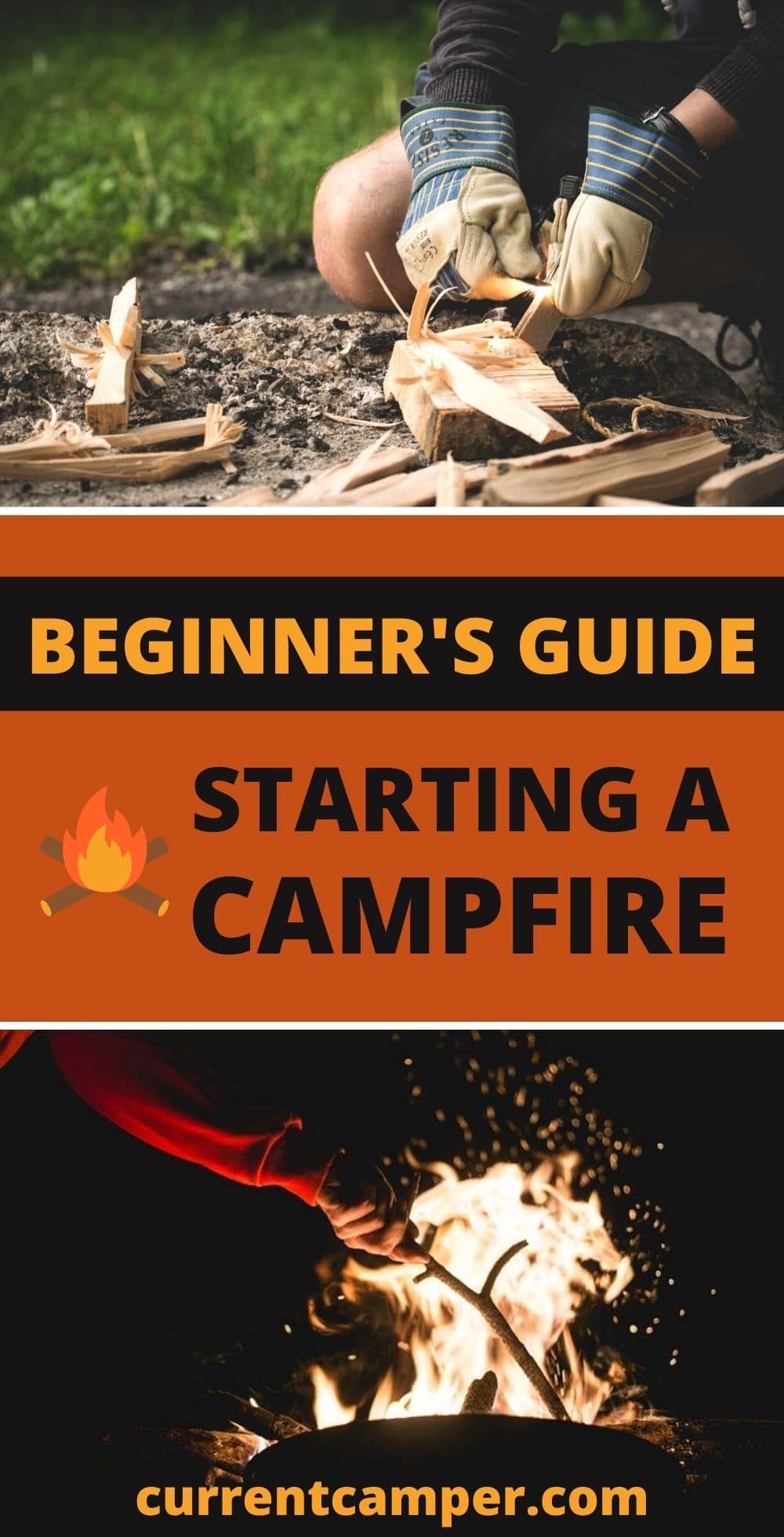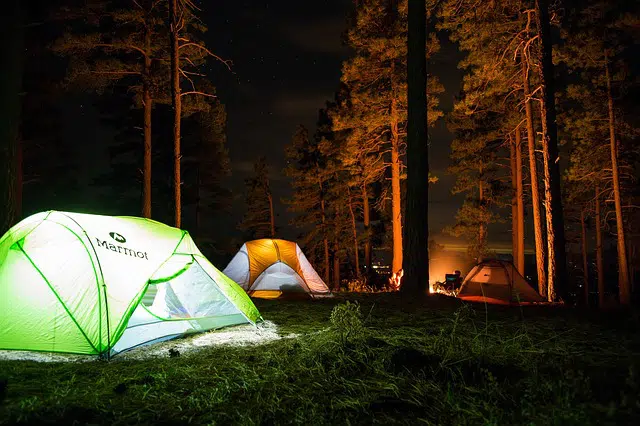In this guide we will walk through the steps of starting a campfire. No camping adventure is complete without a campfire. In many situations, having a campfire can completely turn around your trip for the better.
There are so many practical functions that come with fire — like cooking, heat, security, and light — so it is crucial to understand how to build and sustain a healthy campfire.
Today, we will break down the various parts of starting a fire, how to keep it going, and some of the practical uses that you can get out of it.
Practical Uses For a Campfire
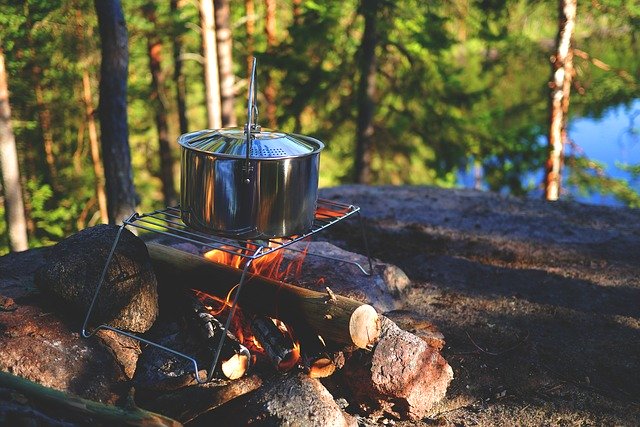

Before we can dive into how to actually make the campfire, it is important to have a little bit of background about what they can be used for. Generally, you won’t be making a campfire with no reason behind it. Although you can, you probably won’t.
Your reason for starting one could be as simple as you want a social place for your friends and family. A campfire can do that for you. When it comes to actual uses, there are a few main ones.
Cooking over a campfire can be an excellent way to connect with nature and get back to our ancient roots as humans. Although it can be tricky, it can be very fun and rewarding.
The other big use of a fire is for heat. Although fire’s heat is just temporary, it can still be a great source in certain cases. Especially in the winter, being able to get a fire going is crucial.
Some of the other, more obscure uses include protection, a source of light, and a signaling device.
Decide What Type of Campfire You Want to Build
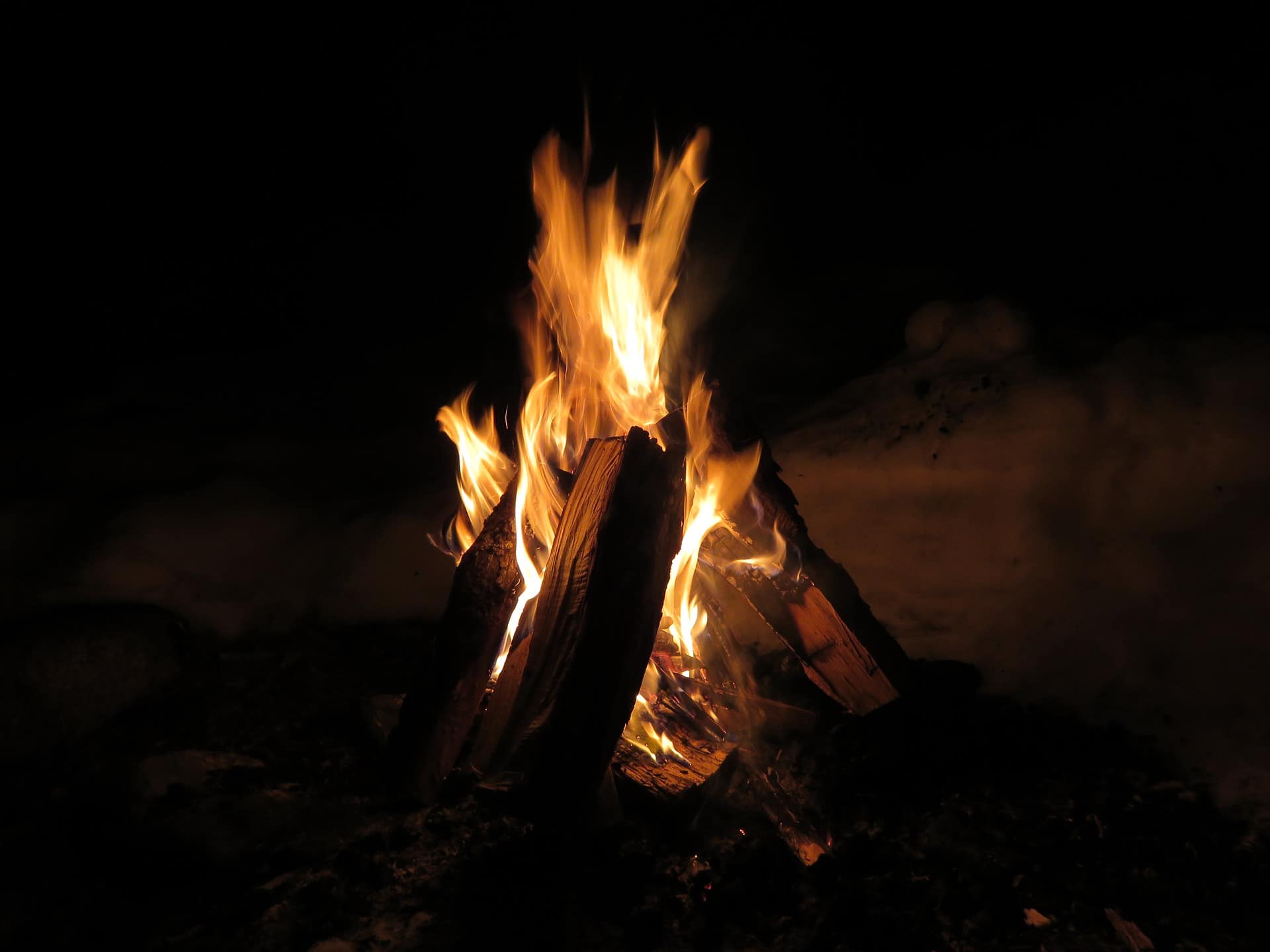

When settling into a campsite and getting yourself acquainted with the area and your gear, there comes a time when you need to think about starting a campfire. There are a number of types, and it is important to decide which one you want to build before you start.
Two of the most popular styles include the log cabin and teepee styles. The log cabin is fairly obvious as you stack the sticks in a square like an actual log cabin would. This is mainly used when cooking. The teepee is along the same vein, as you build an actual teepee with the sticks.
Another normal type is a lean-to. This is primarily used in windy conditions because half of the campfire’s build is used to block the wind. You will use a larger log on one end, then you will lean all of the other sticks up against it. You should align the bigger log to meet the wind head-on and block it.
There are also the star and platform fires. You can definitely use these, but if you are a beginner, sticking to the three main ones is generally best.
Guide: How to Cook While Camping
Assemble Your Materials Before Starting a Campfire


There are a few different types of materials you need in order to start a campfire correctly. Each one is important and skipping one can put the whole act in jeopardy. As long as you know the correct materials and how they are assembled, you’re set.
Tinder
The first material you need is tinder. This is the smallest source of fuel needed. Some examples of tinder include pine needles, cotton balls dipped in wax, paper, cardboard, and a lot of other small, dry materials. The key to tinder is finding something that lights really fast and burns long enough to get the other pieces of the puzzle in place.
Kindling
Once you have the tinder figured out, you move to kindling. Kindling is a little bigger than tinder, but it is not nearly as big as your main fuel will be. You want this to be wood. Small branches and twigs do the trick really well. Where the tinder can be man-made or brought from home, the big difference is both the size and the fact that kindling should be natural and made of wood.
Fuel
Finally, you have the main fuel. This is also known as your traditional firewood. Whether you buy it in bundles at the local gas station or you cut it yourself at the campsite, the job is the same. These logs are the source of fuel that will keep your campfire burning for long periods of time.
You shouldn’t even think about lighting the fire until all of your materials are gathered and by your side. Starting the initial flame too early is a bad mistake that a lot of beginners make. You want to have everything with you that can get the campfire started and going long enough for you to gather more wood.
READ: 8 Tips for Wilderness Camping
All of these aspects work together to make the perfect campfire. The three parts of any fire are fuel, oxygen, and a source. This portion was about the fuel. Next, we will talk about the source.
Ways to Light a Fire
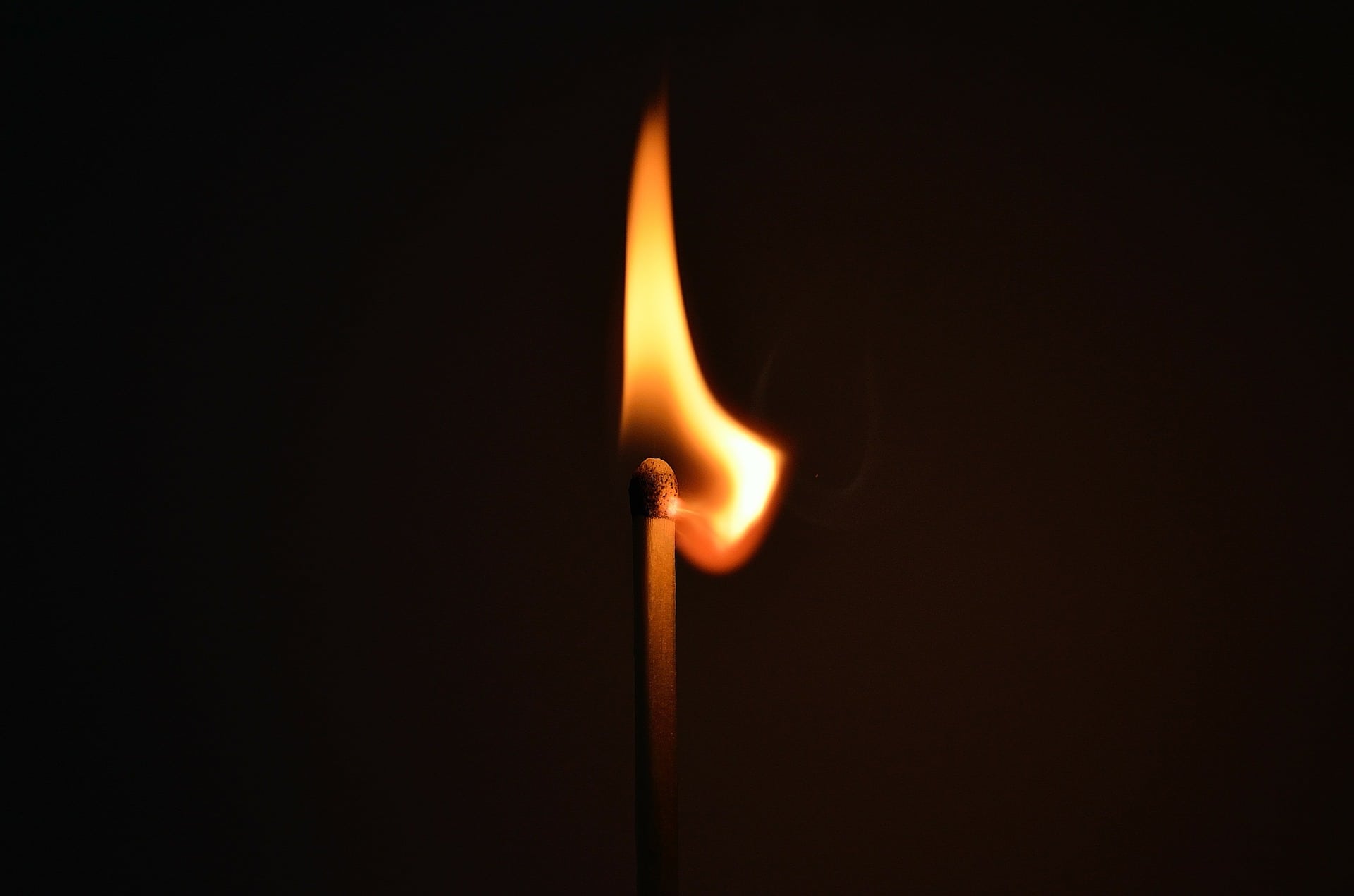

A fire’s source is what sparks a flame and gets the entire process going. The heat source is a crucial aspect to keep in mind when building a campfire. So, knowing how to generate a spark is key.
There are many ways to start a fire, but there are some really easy and efficient strategies to do. The first and one of the most popular is matches. Matches are trusty and work very well in basically any condition except for when it is really wet.
However, you can partially remedy that by investing in waterproof matches. They are a little more expensive and don’t always work well, but could be worth checking out.
Another way to start a fire is with a lighter. Lighters are very reliable as long as you have enough lighter fluid. When using one, you take a lot of the guesswork out of starting the campfire. Plus, they’re really easy to store.
Some other ways to start a campfire include flint and steel, friction using a bow or plow, and a magnifying glass.
READ MORE: How to Camp in the Rain and Not Be Miserable
Maintaining, Extinguishing, and Cleaning Up Your Campfire
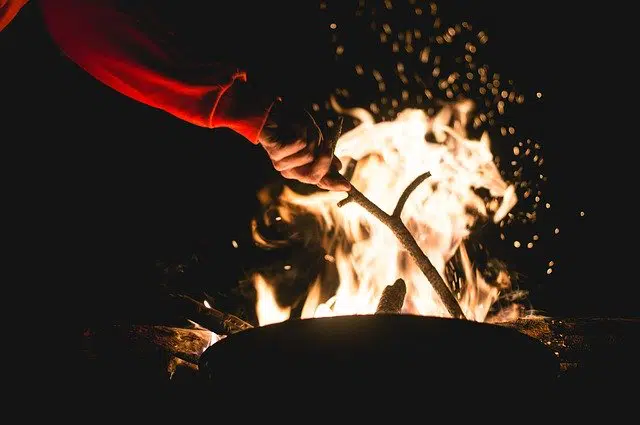

Once you have gotten to the point where your fire is started and you can actually enjoy it, the work is far from over. Yes, you can relax and do what you need to do, but one big step is keeping the flame going at a rate you are comfortable with.
At this point, you no longer have to worry about tinder and kindling, and your sole focus should be on feeding the campfire with larger fuel. This will keep it burning hot and going without needing constant attention. Having cut logs by your side allows for stress-free stoking which allows you to actually enjoy the experience.
Once you are done, it’s important to extinguish the fire correctly and fully. A lot of mistakes can be made because the fire was never fully out, so be sure to double-check.
As a general rule, pouring water over the campfire is the best way to extinguish it. Then, you should rake out or stir the coals and apply more water. This ensures that you will get all of the hotspots covered.
Once you are confident that your campfire is 100 percent out, clean up your area and practice Leave No Trace. This includes picking up any trash that could be in or around the fire pit, your fire supplies that have accumulated in that area, and anything else that looks out of place. Doing your part to keep nature clean is always important.
Pin it for later!
